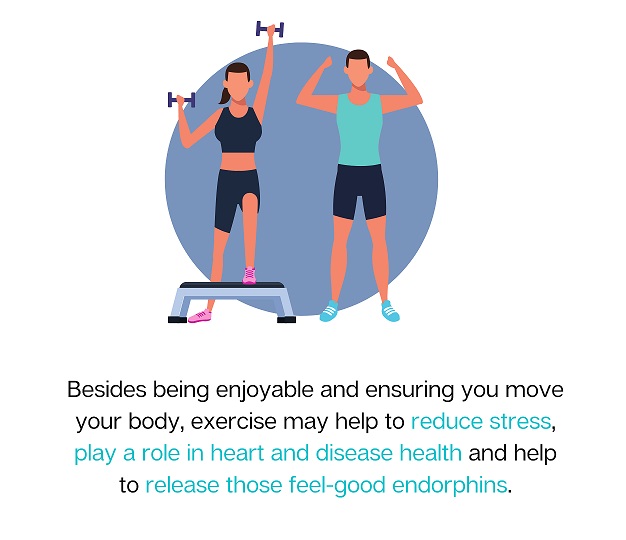Asthma and Exercise

Contents
ABOUT EXERCISE AND ASTHMA
Having a chronic condition, such as asthma, does not mean you cannot exercise. In fact, exercising should be integrated into an asthmatic patient’s overall management plan, with lack of exercise leading to poor fitness and a higher risk of obesity. If asthma is well managed, you can still enjoy all the positive factors related to exercise and are capable of partaking or competing in the majority of sports.
Many individuals with asthma are understandably anxious about exercising as a significant number of patients have reported symptoms of asthma during exercise which, when not treated suitably, may trigger asthma attacks. Therefore, it is vital to understand and monitor your symptoms during physical activity.

EFFECTS OF ASTHMA ON EXERCISING
Experiencing symptoms of asthma during exercise may be a deterrent for asthmatic patients to engage in or continue physical activity. This may be because certain symptoms of asthma mimic that of the body’s natural response to exercise. Therefore, it is important to differentiate between what symptoms are exercise-induced and what are asthma-induced.
SIGNS AND SYMPTOMS OF ASTHMA WHILE EXERCISING:
.jpg)
EFFECTS OF EXERCISE ON ASTHMA
Patients who suffer from asthma are prescribed medicinal treatment for the management of their symptoms. Through extensive research and multiple studies on asthma and asthmatics, exercise is being understood to be a highly effective long-term strategy as an addition to overall asthma management. Exercise, when refined for an asthmatic, has many benefits that improve heart and lung fitness and general overall well-being. Obviously, asthmatics should not over-exert themselves during exercise and stop when certain symptoms arise. As such, there are many refined, safe and better-tolerated exercise regimes available for asthma patients. With these exercise regimes, asthmatics can exercise anxiety-free, adopt a physical lifestyle and in doing so, improve their overall wellbeing.
.jpg)
TYPES OF EXERCISE BENEFICIAL FOR ASTHMA
Since exercise is recommended for asthmatics, the standard principles of exercise prescription (mode, frequency, intensity, and duration) can also be applied to asthma patients. It is, however, recommended that asthmatic patients who decide to partake in physical activities start off relatively slow in order to condition themselves for exercising with asthma.
Swimming is said to be one of the best physical activities for asthmatics as it strengthens the muscles you need for breathing and improves heart and lung function and fitness. Since indoor swimming exposes you to warm, moist air, it is also less-triggering to your asthma.
In addition to swimming, other potential physical activities asthmatics can partake in are walking, squash, netball, golf, tennis, and gymnastics. All of these activities are less likely to trigger an asthmatic episode as they require short bursts of exercise or are done in warm environments. There are sports that are well known for triggering asthma symptoms, namely, winter sports like ice skating and ice hockey, and endurance sports like long-distance running and soccer.
WHAT TO DO IN CASE OF AN ASTHMA ATTACK
It is recommended that you develop an asthma action plan with your doctor. This plan will include the type and dosage of medication to take based on the severity of your symptoms and information to help you to identify worsening symptoms. It is recommended that you always carry your reliever inhaler on your person. If your reliever does not improve your symptoms and provide relief, seek medical attention immediately. Your asthma action plan will help you and your friends, family and colleagues know what to do in the case of an asthma attack and relieve the anxiety and stress you may have for future asthma attacks.
.jpg)
HOW TO MANAGE AND REDUCE THE RISK OF EXERCISE-INDUCED ASTHMA
The key to managing and reducing your risk of an asthma attack during exercise is ensuring that you follow your treatment and asthma action plan and stay well controlled. Make sure you have your reliever inhaler with you when heading out to an exercise session or when you are intending to undergo physical activity, and use it before you start exercising as advised by your doctor. You can further reduce the risk of symptoms during exercise by taking the necessary precautions in cold, dry weather by covering your mouth with a scarf to prevent cold, dry air from entering your body. As soon as you start to experience any of asthma symptoms, be sure to follow your asthma action plan. If you are exercising with someone, make sure they know you are asthmatic and that you have an inhaler with you in case they need to access it for you.
It is also recommended that you warm up before exercising and cool down after you are done. This will condition and prepare your body for the upcoming exercise and reduce the chances of you experiencing an attack. If you are exercising outside, take note of the conditions as both extreme cold and heat may aggravate your symptoms. Also be aware of an increase in pollen and/or pollution in the air before exercising outside.
Using your inhaler correctly and regularly, doing regular check-ups with your doctor and keeping yourself informed about your condition will help manage your asthma both during exercise and your daily routines.
CONCLUSION
Your life with asthma is a manageable one. Many individuals who suffer from asthma still maintain a healthy, active lifestyle. The key to controlling and managing your asthma as an active individual is to follow and inform others of your treatment and asthma action plan. It is also wise to regularly consult your doctor and follow and update yourself on any healthcare advice given to you. Following this, your life as an asthmatic can be active, healthy, and anxiety-free.
Last reviewed : 5 May 2024
Related Brochures

asthma

asthma-myths-and-facts
